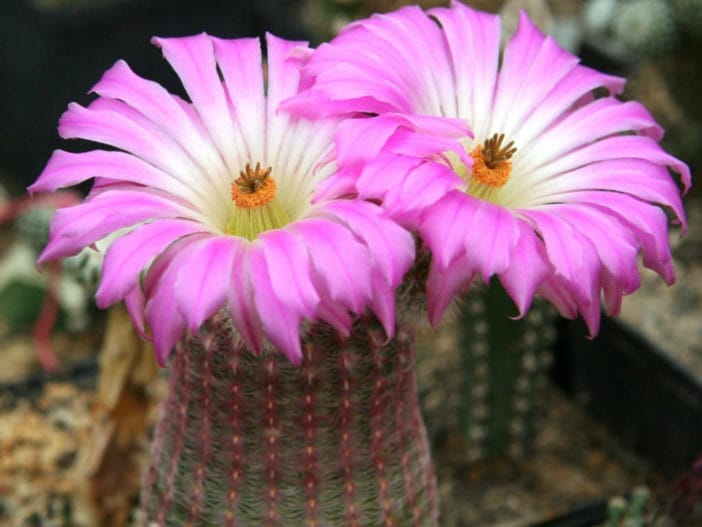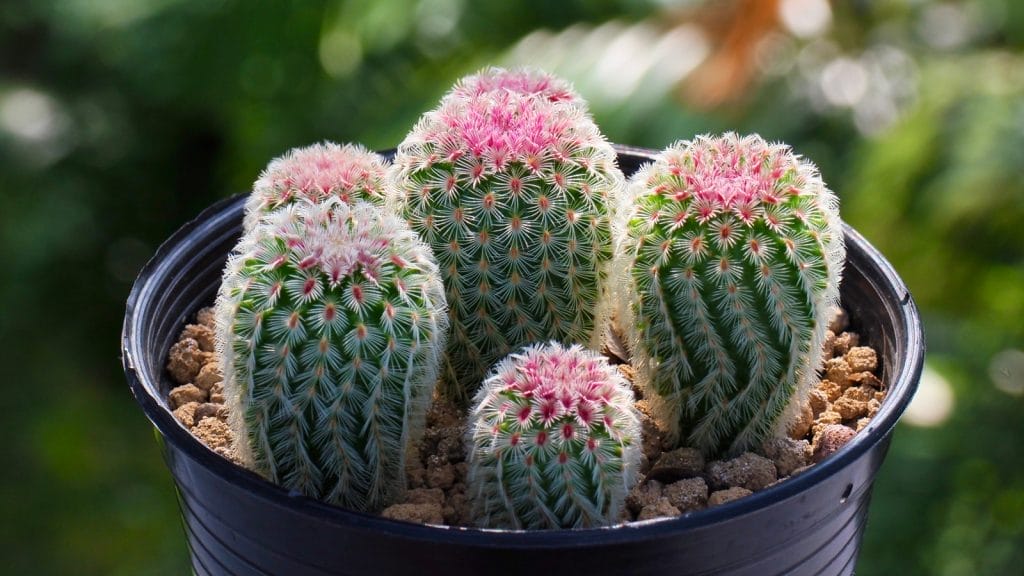Growing and Care Of Rainbow Cactus
The cultivation and maintenance of the Rainbow Cactus, or Echinocereus Rigidissimus, presents a unique opportunity for enthusiasts and novices alike to engage with a resilient yet strikingly beautiful species. Adapted to thrive in arid conditions, this cactus requires careful attention to light exposure, watering schedules, and soil composition. While its care might seem straightforward due to its minimal water needs, the nuances of its requirements can greatly impact its health and vibrancy. Understanding these subtle yet crucial aspects can prove challenging, and exploring the best practices for its propagation and care could lead to vibrant growth and spectacular flowering, revealing why this cactus is a cherished specimen in many collections.
Rainbow Cactus Characteristics
The Rainbow Cactus, scientifically known as Echinocereus Rigidissimus, is distinguished by its globose or cylindrical stems that may grow as a single plant or form loose clusters. This species, part of the Hedgehog cactus family, is native to the arid regions of Mexico and the southwestern United States.
Its growth is characteristically slow, and it adapts well to the harsh environments where it naturally thrives. The stems of the Rainbow Cactus are covered with tightly packed, colorful spines that offer a striking visual contrast against the arid landscapes.
These spines not only serve an aesthetic purpose but also play a critical role in the plant’s survival, providing shade and reducing water loss in the intense desert heat.
Flowering and Fragrance

Beyond its striking spines, the Rainbow Cactus captivates with its vibrant, oversized blooms that appear in the summer. These diurnal flowers, ranging in color from near-white and yellow to lavender, magenta, and pink, are not only a visual spectacle but also emit a subtle, pleasing fragrance.
The blooms closely resemble those of the Echinopsis genus and are complemented by cream-colored stamens, enhancing their aesthetic appeal. After the flowering period, which peaks in the warmer months, the cactus produces edible fruits.
These fruits, taking about three months to mature, contain a white pulp that is both delectable and nutritious, offering an added incentive for cultivating this remarkable cactus species.
Light and Temperature Requirements

Rainbow Cactus thrives in environments that offer full sunlight and can endure brief periods of cold weather. For ideal health and vibrant blooms, this cactus requires exposure to direct sunlight for the majority of the day. It is ideally suited for outdoor growing in USDA hardiness zones 9a to 11b, where sunlight is plentiful and temperatures are generally mild.
Indoors, a south-facing window that provides unfiltered sunlight throughout the day is most beneficial. While the Rainbow Cactus tolerates cooler temperatures during dormant winter months, it is essential to protect it from frost, as prolonged exposure to cold can damage the plant. Temperatures consistently below freezing are not advisable without adequate protection.
Watering and Feeding Guidelines
Having established the light and temperature needs, we now focus on the watering and feeding requirements for the Rainbow Cactus to guarantee its health and longevity.
Watering should be minimal, adjusting to the plant’s environment and growth cycle. During the hot summer months, water the cactus once every two weeks, ensuring the soil completely dries between watering sessions to prevent root rot. In winter, reduce watering to once a month.
For feeding, employ a diluted cactus-specific fertilizer during the active growing season in summer. This provides essential nutrients without overwhelming the plant. Additionally, incorporating sequestrated iron occasionally can prevent chlorosis, promoting robust health and vibrant blooms.
Proper hydration and nutrition are critical in cultivating a thriving Rainbow Cactus.
Soil and Transplanting Tips
Selecting the right soil composition is essential for the health and growth of the Rainbow Cactus. A standard cactus potting mix, which typically comprises a blend of loamy soil and coarse sand or perlite, provides the ideal drainage and aeration conditions. Aim for a pH that is neutral to slightly acidic.
When it comes to transplanting, this should be done sparingly, as the Rainbow Cactus prefers minimal disturbance due to its slow growth and delicate root system. Make sure any pot chosen has ample drainage holes to prevent water retention. Handle the cactus gently during the transplanting process to avoid root damage, and position it in a way that the root ball remains intact, ensuring a smoother adjustment and better adaptation to its new environment.
Conclusion
The Rainbow Cactus (Echinocereus Rigidissimus) is an exquisite plant that requires minimal care, thriving in arid, sunny environments.
It is crucial to provide this cactus with well-draining soil, sparse watering, and adequate sunlight to boost its vibrant blooms and edible fruits.
Surprisingly, despite its slow growth, the Rainbow Cactus can live for several decades, making it a long-lasting addition to any garden.
Mastery of these care guidelines guarantees a healthy and flourishing cactus.







